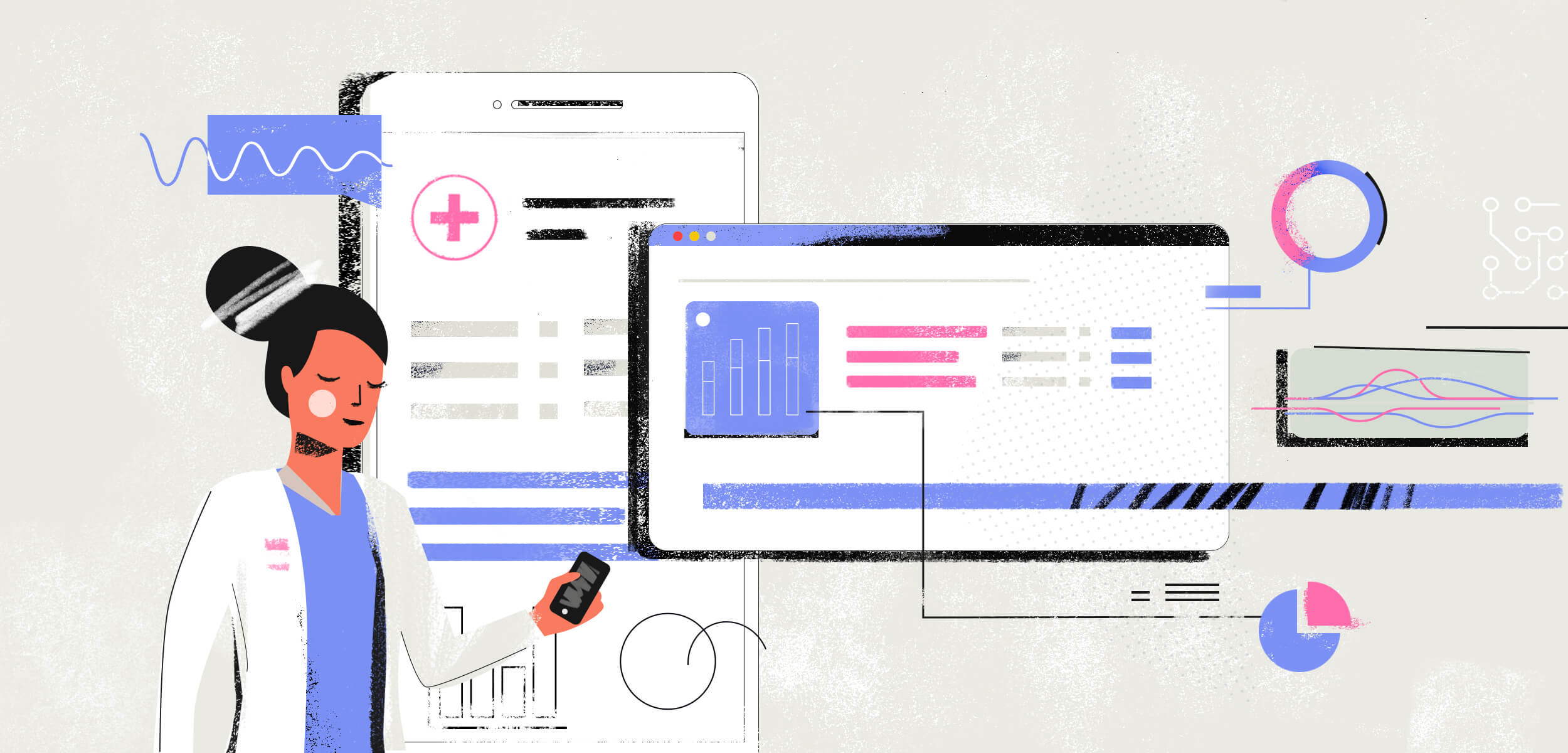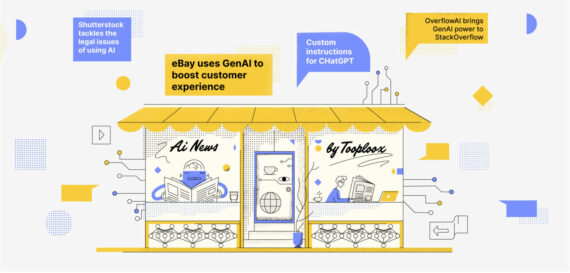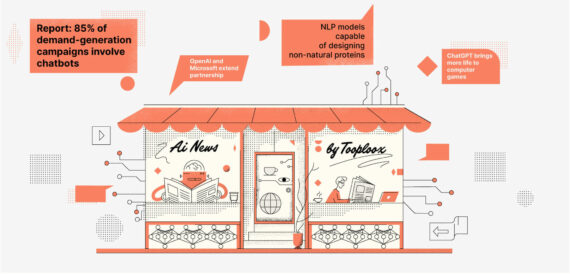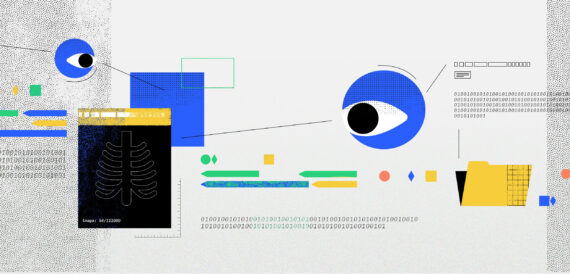
Delivering AI-based solutions for healthcare is a sophisticated matter in which the technology is not the main challenge. The critical thing is data access, and the defining concept is the Electronic Health Record (EHR).
There are multiple ways to boost healthcare with machine learning-based solutions, yet the revolution is still to come. According to the Markets and Markets research, AI in the healthcare market will be worth up to $45.2 billion by 2026. On the other hand, the adoption of digital solutions is not as fast as one would expect.
According to a survey done by the KPMG, only 67% of healthcare industry executives claim that their employees are supporting AI adoption – one of the lowest rankings of any industry.
There are many obstacles to the EHR adoption process including the inertia of organizations and lack of sufficient funds, but one of the greatest concerns is patient privacy and data protection. 75% of KPMG survey respondents think that AI could threaten the security and privacy of medical data.
On the other hand, though, this threat is less real than thought – in most cases, medical data is not digitized and thus inaccessible for machines. Also, while data security is transparent to digitalization, paper-based pmr is still under risk of being lost or breached in other ways.
Therefore, the first barrier for AI adoption in the healthcare industry is the wide adoption of the EHR.
What is PMR?
Every industry generates data, with some being more sensitive than others. When it comes to the healthcare industry, patient data (PMR – Personal Medical Record) often includes information that would be disastrous if breached, including details about health, lifestyle, addictions, etc.
The healthcare industry generates billions of data points every day, with thousands of entries regarding a single patient since their birth. Much of this data is generated in a traditional, non-digital form, such as a printed sheet of paper with the results of a lab test or diagnostic image.
This traditional form of medical data is less vulnerable to breach by hackers – there is no way to get access to a ring binder with patient records without physically entering the doctor’s room or an archive. On the other hand, though usable and sometimes convenient for a doctor, the data in such a form is utterly useless for computers.
The situation changes dramatically with the proliferation of Electronic Health Records.
What Is EHR?
The Electronic Health Record (EHR or EMR) is the digital form of the PMR. Digitization makes access to the PMR much easier for health professionals as well as usable to machine learning-based solutions.
According to the National Library of Medicine, 80.5% of US hospitals have adopted at least a basic EHR system. Still, only 37,5% of hospitals have adopted at least 8 out of 10 EHR data for performance measurement functions.
When it comes to Europe, the adoption of at least a basic Electronic Health Record system is relatively high. According to the European Commission report, the EHR is available in all EU countries and used by 96% of General Practice doctors (GPs). Yet, typically, this refers to the basic transferring of the record into the computer to make it easier to send by email.
On the other hand, the level of adoption of more sophisticated applications varies regarding the country, with Denmark, Estonia, Finland, Spain, Sweden, and the United Kingdom leading the field, while Greece, Lithuania, Luxembourg, Malta, Romania, and Slovakia are struggling to keep up.
Making the documentation digital is a massive leap toward AI-supported healthcare, but it doesn’t automatically make the data algorithm-friendly.
The Challenges Of EHR For AI
EHR implementation itself doesn’t mean that the organization is ready to benefit from AI advancements. Usually, it is not even close.
Storing Data
Data stored in a digital form has multiple advantages. It is easier (and faster) to transfer it between facilities, replicate, and archive. But what is “convenient” is not necessarily “actionable.”
Real-Time Access
When it comes to medical data storage, there are two challenges. It is necessary to store it in a space that is secure enough to ensure data safety. Also, every healthcare facility produces a vast amount of data, so the storage system needs adequate capacity.
Tape storage is an affordable way to store data but that’s the only advantage it brings to the system. This type of storage makes the data unactionable and machine learning-based systems gain little to no benefit from it – the access is too slow and it is impossible to train models or run them on the dataset to perform some exploration.
So, in fact, the only way to store the medical data to make it AI-actionable is to do it in the data center – be that an on-prem one or a cloud-based one – which is neither cheap nor physical space-efficient, with the need to build or find a separate building to house a server facility.
Sharing Data
The data center is the only reasonable way to store healthcare data due to the time of access and the ability to share data between various tools and devices. When it comes to EMR, AI can access it only when it is pre-processed or at least standardized.
Scraping through unstructured data, although possible, is a separate task for the AI. Usually, it takes the form of natural language processing, optical character recognition, and image recognition sometimes – the same as is used to digitize libraries and make the oldest books searchable.
So, in fact, without delivering precise and standardized ways to store, process, and prepare the data, AI in EHR would be usable only to dig out the information and not to deliver any added value, such as reducing costs or improving the quality of delivered services.
Data Interoperability
Storing and sharing data is one thing, but making it readable for various devices and solutions is another thing. It is not uncommon for medical tech vendors to use proprietary formats that make data accessible only for a narrow category of devices or software solutions.
Introducing a centralized medical data warehouse is impossible without ensuring that all the data stored there is accessible for every user entitled. This is usually possible on a single facility-level or when operating in a network of facilities, but becomes challenging on a country-wide level.
Staying Compliant
Last, but not least, storing and processing medical data is not the only challenge for AI healthcare solutions in comparison to AI based on commonly-available data, such as images of cats, road signs, satellite imagery, or transactional data acquired from e-commerce systems.
Considering the legal framework around the healthcare industry, processing medical data and delivering AI-based solutions that would boost healthcare efficiency is more challenging than in retail or manufacturing, for example.
In the EU, the data operator, which is usually the hospital, needs to stay compliant with GDPR. In the US, every institution that is willing to work with medical data needs to stick to the HIPA rules. Without the experience and knowledge about this particular aspect of patient data-related operations, every Artificial Intelligence solution project will fail.
Summary – The Low Hanging Fruits
The float from analog toward electronic health records in healthcare is unavoidable, but also slow and troublesome. On the other hand, the sole implementation of a centralized medical data storage system comes with various advantages of using the EHR data for analytics.
There are at least two low-hanging fruits the insurance company or a similar institution can grab:
- Screening – the repository of data is the perfect place to search for the correlations of diseases and symptoms. Thus, it would be easier to spot an early, sometimes un-obvious sign of a disease in order to prevent it rather than treat it.
- Encouraging good practices – the central repository would enable providers to launch multiple preventive measures, like encouraging people to exercise or quit smoking. These programs could be applied through digital means like mobile apps that track physical activity.
Both of the means mentioned above would significantly reduce the cost of overall healthcare without sacrificing its quality and that is, of course, one of the ultimate long-term goals for any insurer or healthcare-related institution.
If you wish to talk more about healthcare-related data problems, don’t hesitate to contact us now. We will be happy to hear your remarks and share our experiences!
Read more our healthcare-related content:





